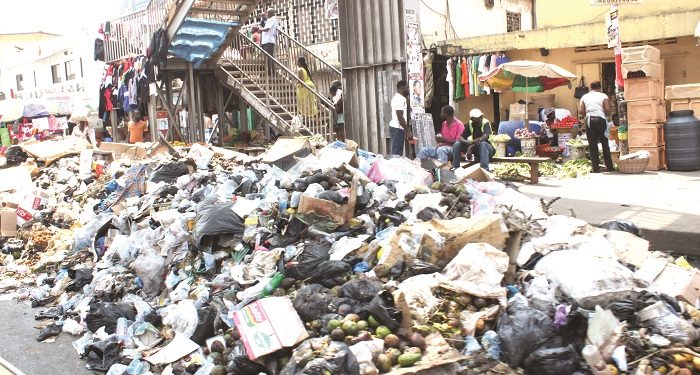There is an adage in Akan which means: “If you refuse to put something at exactly the place it should be, it will eventually fall”. Similarly, until the root cause of filth is known and addressed all efforts as a nation to combat filth will continue to prove futile.
The root cause analysis as a method of problem-solving is used to identify the basic or initial cause of filth before appropriate solutions can be proposed. The root cause analysis generally serves as input to a remediation process whereby corrective actions are taken to prevent the problem from reoccurring – the key point over here is nonrecurrence. All Assembly Members, Religious/Opinion Leaders, Chief Executives, Mayors, Members of Parliament, and Ministers of State who are fond of organizing repetitive ‘Clean Up Exercises’ at the same locations aren’t helping to eradicate filth. They mostly invite various media outlets to take pictures/videos and also to deliver news to the general public, meanwhile, such ‘Clean Up Exercises’ have been ineffective as far as eradicating filth is concerned. Henceforth, it isn’t inappropriate for anyone to suggest that conveners of ‘Clean Up Exercises’ want to serve their parochial interests, and nothing else. So after assembling people to clean a particular area and within just a week, the same place has been engulfed with filth again how do you feel?
In fact, some leaders always try to justify their reactive and unproductive approach to waste management by attributing most of the challenges to the attitude of recalcitrant citizens. Does that mean there is no alternative approach to eradicate filth perpetually? Surely, there should be an alternative approach and that’s the reason why it is imperative to adopt the root cause analysis via the use of analytical thinking techniques – such as observation, analysis, interpretation, evaluation, inference, problem-solving and decision making – to better understand and solve the problem. It is worthy to note that the cause of filth is a bifurcated situation: thus, filth caused by human activities and non-human activities. Inasmuch as filth caused by human activities can be prevented and controlled, pragmatic measures should be put in place to control filth caused by non-human activities – like dust into gutters, leaves falling from trees, animal droppings, etcetera – as well.
Considering filth caused by human activities, for instance, we should ask ourselves why people still decide to litter indiscriminately. Is it due to ignorance, inconvenience, stupidity or insanity? Arguably, some people aren’t abreast with good sanitation practices and hence such ignorami will definitely litter around. Others have adequate knowledge of good sanitation but there might be no temporary storage units available and hence causing inconveniences to dispose of waste. Some people too aren’t ignorant of good sanitation and there are temporary storage units available but they feel lazy and stupidly throw waste anywhere. Moreover, some people (without ignorance, inconvenience, or stupidity) are naturally content with being surrounded by waste products and such attitude is equivalent to insanity. Other relevant questions that need to be asked to ascertain pragmatic solutions include: “Why do temporary storage units have no covers or get stolen? Why will a waste management firm decide not to collect waste of individuals and institutions on due time? Why will a waste collector decide to dump waste collected from individuals or institutions into gutters? Why must a landfill site be allowed to reach its maximum point? What can be done to let individuals and institutions segregate waste products? What can be done to reduce waste generation?” Answers to these questions will lead to pragmatic solutions being proposed.
Now, we can realize that if someone generates waste (example; single-use plastic) and it doesn’t touch the ground till it reaches the final destination (recycling facility or landfill site) where that particular waste product ceases to exist, there will be no filth. The root cause analysis is capable of solving about 50% of the problem at the initial stage and therefore, it should be embraced in our quest to eradicate filth. Through the root cause analysis Idealoyal GhaClean has coiled a term, “Waste Disposal Chain”, that will be a very useful mechanism to ensure that waste generated doesn’t touch the ground till it ceases to exist and thereby, eradicate filth without reoccurring. The author wishes to highlight the ‘Waste Disposal Chain’ in the next article.
About The Author
Harry Sarfo Diko, popularly known as Jamigy Harry, is the sole proprietor of Idealoyal Enterprise – a registered business (with GhaClean as one of its objects of business). He holds a Bachelor of Commerce (Accounting & Finance) Degree from the University of Cape. He’s much enthusiastic about Entrepreneurship and solving societal problems.
Email: sarfodik@gmail.com
LinkedIn: https://www.linkedin.com/in/harry-sarfo-diko-1a392317b
Facebook: https://www.facebook.com/sarfo.jamigyharry









![Drake helps a group of African kids go viral [Watch]](https://thepostghana.com/wp-content/uploads/2020/04/drake-2019-pxn-billboard-1548-1586360114-1024x677-360x180.jpg)





































